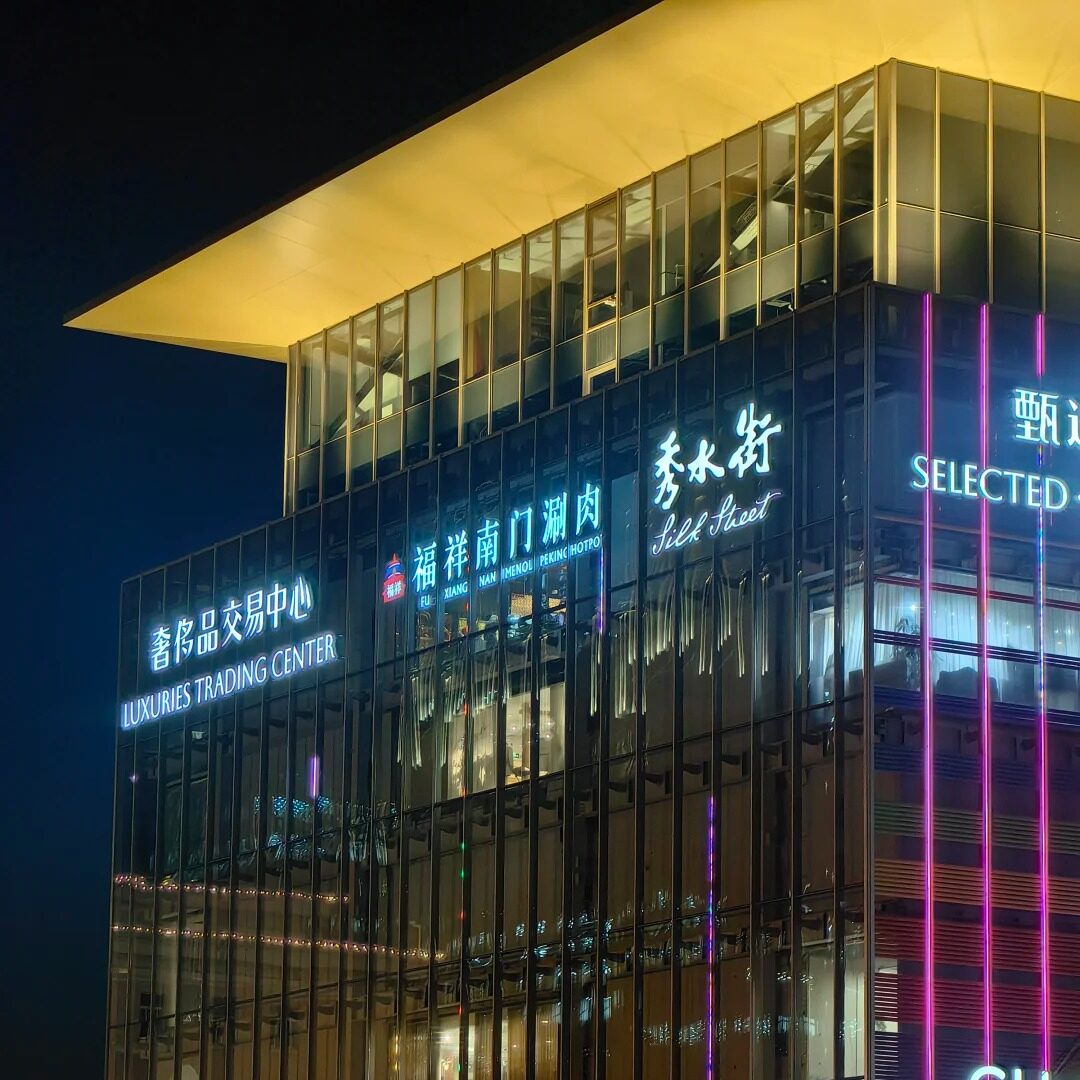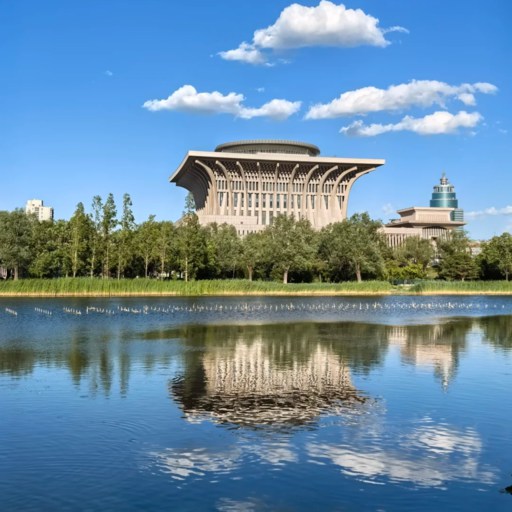Thinking about a trip to Beijing but not sure where to start?This city is a thrilling mix of the ancient and the modern. You can climb the Great Wall in the morning, explore narrow hutongs in the afternoon, and enjoy trendy rooftop bars by night. Beijing isn't just about big sights like the Forbidden City or the Temple of Heaven—it’s about getting lost in local markets, sipping tea in a quiet courtyard, and tasting crispy Peking duck from a hole-in-the-wall eatery.Whether you love history, art, food, or just people-watching, Beijing has something for you. It’s a place where imperial palaces stand next to sleek shopping malls, and centuries-old traditions live on beside cutting-edge design. In this guide, you’ll discover the very best of Beijing—from iconic landmarks to hidden gems—so you can plan a trip that’s unforgettable from start to finish.
What Local Foods Should You Try in Beijing?

Beijing Traditional Dishes Zhajiangmian
Must-Try Street Foods in Beijing
Beijing’s street food scene offers a thrilling ride through taste and tradition. Wander through bustling alleyways or vibrant night markets, and you’ll find locals lining up for quick, flavorful bites. At the top of the list is jianbing, Beijing’s iconic breakfast wrap. Vendors skillfully spread a thin batter on a hot griddle, crack in a fresh egg, sprinkle scallions, smear bean paste or chili sauce, and top it all with a crispy cracker before folding it into a portable meal. Crunchy, spicy, and savory—it’s the perfect way to start the day.
Another must-try is chuanr, skewered meat grilled over open flames and dusted with cumin, chili, and sesame. Though it originated in Xinjiang, chuanr has become a Beijing street staple. In summer, the smoky aroma drifts from sidewalks, luring locals and visitors alike. Tanghulu, bright red candied hawthorn on skewers, offers a nostalgic treat. These glossy, sugar-coated fruits balance sweet and tart, making them irresistible, especially in colder months.
You’ll also find baozi (steamed buns), shouzhuabing (hand-griddled pancakes), mahua (fried dough twists), and even daring options like stinky tofu and fried scorpions. Whether served from carts, kiosks, or tiny shops, each dish tells a story. These street foods reflect the city’s rhythm—fast, vibrant, and deeply rooted in tradition. They cater to both hunger and history, offering a quick taste of Beijing’s culinary soul. If you want to understand the city beyond its landmarks, start with what’s sizzling on the street.
Traditional Dishes You Can’t Miss
No visit to Beijing is complete without diving into its traditional dishes. The most famous of all is undoubtedly Peking Duck. This celebrated delicacy features crispy, lacquered duck skin and tender meat, served with pancakes, scallions, and sweet bean sauce. Restaurants like Quanjude and Dadong roast the duck over fruitwood fires, creating an unforgettable dining experience. It’s more than just a meal—it’s a performance rooted in imperial cuisine.
Another essential is Zhajiangmian, hand-pulled noodles topped with stir-fried pork in fermented soybean paste. The savory depth of flavor, mixed with julienned vegetables, makes this a comforting dish beloved by locals. Unlike flashy duck feasts, zhajiangmian reflects Beijing’s homey side. You’ll find it in humble eateries and family kitchens across the city.
For the adventurous, Luzhu Huoshao is a bold choice. This dish combines pork intestines, lungs, tofu, and baked wheat buns in a fragrant broth. Rich, greasy, and unapologetically local, it’s not for the faint of heart—but deeply respected in Beijing food culture. Another comforting dish is Douzhi, a fermented mung bean milk with a sour edge, usually served with crispy fried dough rings.
Seasonal Snacks and Where to Find Them
Beijing's culinary calendar follows the seasons, and each time of year brings its own beloved snacks. In spring, one of the most cherished treats is Ai Wo Wo. These delicate glutinous rice balls are often filled with sweet bean paste or jujube and dusted with crushed nuts. Soft, fragrant, and slightly floral, they’re a symbol of renewal. Traditionally eaten around Qingming Festival, they can be found in local pastry shops or at seasonal stalls in markets like Sanyuanli or Niujie.
Summer in Beijing is hot and humid, calling for cooling snacks. Mung bean cakes—smooth, pale green, and subtly sweet—offer a refreshing break. You’ll often find them in elegant gift boxes during Dragon Boat Festival. Cold noodles, such as liangpi or cold sesame noodles, also take over menus. These dishes combine chewy textures with tangy sauces, perfect for combating the city’s heat.
As autumn approaches, the streets fill with the aroma of roasted chestnuts and candied sweet potatoes. Vendors stir shiny woks full of hot stones, roasting chestnuts until they’re tender and sweet. At the same time, glazed sweet potatoes, warm and sticky, are sold in paper bags—a favorite treat for park-goers and students.
Winter brings hearty indulgences like lamb spine hot pot or sugar-coated fried dough twists. These rich, warming snacks are ideal for freezing days and long nights. Temple fairs, especially during Chinese New Year, are packed with seasonal treats—from stuffed rice cakes to peanut brittle.
What Are the Best Attractions to Visit in Beijing?
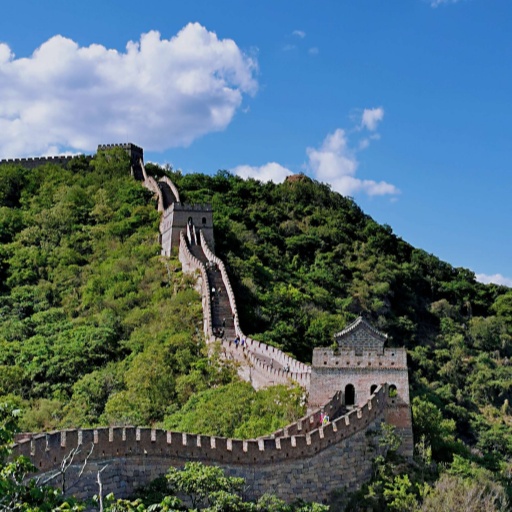
Mutianyu Great Wall
Explore Beijing’s Imperial Wonders
Walk through the gates of Beijing’s imperial landmarks, and you’re stepping into centuries of power and tradition. Start with the Forbidden City, once home to emperors and royal courts. It’s massive—over 900 buildings—so don’t rush. Wander past dragon-tiled roofs, giant courtyards, and carved stone bridges. You’ll feel the weight of history in every hall and walkway. The Palace Museum inside offers priceless treasures, from jade seals to silk robes. Arrive early. Mornings are quieter, and the sunlight paints the walls gold.
Next, head south to Tiananmen Square. It’s vast, open, and filled with national pride. Watch the flag-raising at dawn. It’s solemn and stirring. Then visit the National Museum of China or Chairman Mao’s Memorial Hall, both right on the square. Everything here speaks of revolution, renewal, and China’s rise.
Close by is the Temple of Heaven. Emperors came here to pray for good harvests. The blue-roofed Hall of Prayer is stunning, especially under a clear sky. But don’t just snap a photo and leave. Early mornings bring locals practicing tai chi, playing music, and flying kites. It’s quiet, graceful, and real Beijing. These sites aren’t just ancient—they’re alive. You’ll leave with more than pictures. You’ll leave with stories
Visit the Great Wall Without the Crowds
Yes, the Great Wall is a must. But skip the crowds and go where the locals go. Mutianyu is a great choice—less busy than Badaling but still fully restored. The wall curves along green mountains, with towers and steep stairs stretching as far as you can see. Ride the cable car up. Then walk, climb, and stop often. The views are incredible. Take it slow. Let the wind, the height, and the history sink in.
Want something more adventurous? Try Jinshanling. It’s part restored, part wild. Fewer tourists make the hike peaceful. You’ll walk crumbling stone paths, through towers where grass grows between the bricks. Bring water, sturdy shoes, and a sense of awe. This is the wall as it once was—raw, powerful, endless.
For real solitude, consider Gubeikou or Huanghuacheng, where the wall meets water and silence. Some parts are steep, others gentle, but all feel untouched. These spots take time to reach—but that’s the point. Fewer buses, fewer voices. Just you, the wall, and the mountains beyond. You’ll understand why it’s called one of the world’s wonders.
Discover Hidden Gems Beyond the Big Sights
Beijing is more than emperors and walls. The city hides beauty in its corners. Start with the hutongs—narrow alleys where daily life unfolds. Walk or bike through areas like Nanluoguxiang or Shichahai. You’ll find tiny noodle shops, old courtyards, and neighbors chatting over tea. It’s not a museum—it’s lived-in history. Peek into doorways. Hear birds in cages. Smell fresh scallion pancakes. This is local life, quiet and rich.
Another gem? The Panjiayuan Antique Market. It’s open on weekends and packed with everything—calligraphy, porcelain, old coins, even Cultural Revolution posters. Haggling is part of the fun. Come early. Wander slow. Every stall tells a different story.
Need calm? Try 798 Art District. It’s modern, gritty, and full of surprise. Old factories turned galleries. Street art next to cafes. Sculptures, bookstores, and neon signs. It’s Beijing’s creative heart. Not polished—but real. Walk till your feet hurt. Sit with a coffee. Watch artists set up their next show.These places don’t scream for attention. But they stay with you. They show a side of Beijing that’s layered, human, and full of quiet charm. The best part? Most travelers miss them. You won’t.
Where Can You Take Scenic Walks in Beijing?
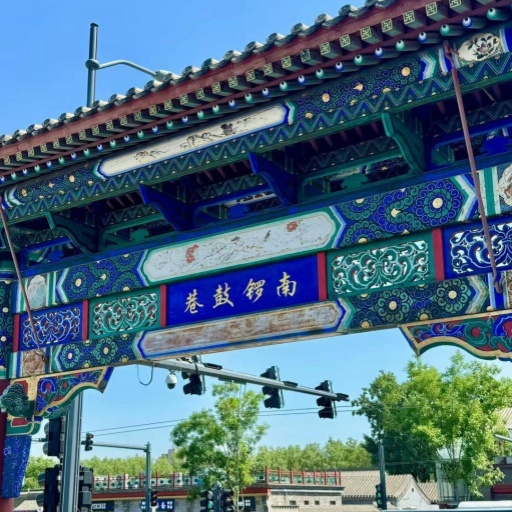
Beijing Hutong Nanluoguxiang
Stroll Through Historic Hutongs
Step into a hutong, and everything shifts. The noise fades. The skyline disappears. In its place—narrow lanes, weathered brick walls, and quiet traces of old Beijing. These alleyways have stood for generations, watching emperors come and go, bicycles replace rickshaws, yet the pace of life barely changes.
Start your morning in Nanluoguxiang. It’s well-known, but early hours bring a different mood. Shops still closed, neighbors sweeping their doorsteps, steam rising from breakfast stalls. Grab a warm sesame bun, sip soy milk, and feel the day begin. Then take a turn—maybe down Yuer Hutong or Mao’er Hutong. They’re less crowded, more personal. You’ll see children on bikes, birds in bamboo cages, walls marked by time and slogans.
Keep walking. Red lanterns hang outside some homes. Others show simple signs of life—drying clothes, open windows, a quiet nod from someone passing by. These aren’t tourist sites. They’re lived-in, layered with memory. To truly know Beijing, look closer, not higher. In its hutongs, the city breathes slowly. And if you’re listening, it speaks.
Walk along Houhai Lake for a gentle end to your stroll, where the city meets the water and the old blends with the new.
Walk Along Houhai for Lakeside Views
Looking for peace and water in the middle of Beijing? Go to Houhai. It’s a chain of quiet lakes, lined with willows, boats, and breezy cafés. Locals come here to walk, fish, or just sit. Tourists come for the view—and stay for the vibe.
Start at the southern end. You’ll pass stone bridges and slow boats. The water reflects tiled roofs and fluttering flags. Rent a paddle boat. Or just stroll. The path loops the lake. It’s flat, shaded, and full of surprises. Seniors playing erhu. Teens taking selfies. Couples holding hands. Kids chasing bubbles. Every corner has life.
At night, the mood shifts. Red lanterns light up. Bars open. Music drifts over the lake. But during the day? It’s calm. Simple. Beautiful. You can stop at a teahouse. Try hawthorn juice or jasmine tea. Watch the breeze ripple the water. No rush. No pressure. Just you, the path, and the sound of your footsteps.
Don’t forget to peek down side alleys near Yandai Xiejie. You might find a calligraphy shop, a courtyard café, or a tiny bookstore with a cat asleep by the door. Houhai is both scenic and social. It’s where Beijing relaxes. Take your time. Soak it in.
Stroll Through Qianmen Street to Relive History
Qianmen Street is where past and present walk side by side. Wide stone-paved roads, restored shopfronts, and an old-style tram rolling through the middle—it feels like a movie set. But it’s real. And full of stories.Start at Zhengyangmen, the giant gate at the south end of Tiananmen Square. From there, Qianmen stretches out like a time tunnel. You’ll see brands over a century old—Quanjude, home of Beijing roast duck; Tongrentang, the ancient pharmacy; and Ruifuxiang, a silk shop once favored by officials. Step inside. Smell the herbs. Touch the fabrics. Order a duck pancake to go. This isn’t just shopping. It’s time travel.
Walk further and you’ll find side alleys like Dashilanr, where things get gritty and real. Barbershops with striped poles. Old men playing chess. Peddlers selling candied fruit. Tourists take photos, yes—but locals still live here. That balance makes Qianmen special.
In the evening, lights glow soft and golden. The tram clatters past. You hear footsteps, laughter, and the soft hum of Beijing’s past breathing in the present. Don’t rush through. Sit on a bench. Watch the street performers. Listen to the stories. Qianmen doesn’t just show history—it lets you walk through it.
Which Restaurants Should You Try in Beijing?
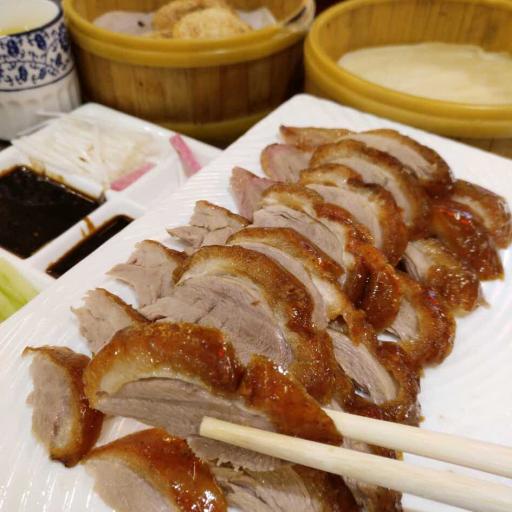
Peking Duck
Taste Peking Duck at Da Dong Restaurant
If you’re wondering where to eat in Beijing, Da Dong should top your list. This famous spot is known for its Peking duck—crispy outside, tender inside, and not overly greasy. Unlike the traditional heavy style, Da Dong’s version is lighter, served with a unique dipping sugar and blueberry sauce.
This modern restaurant also brings flair. Chefs carve the duck at your table while explaining the perfect wrap ratio: one slice of duck, one piece of scallion, one dab of sauce, and a paper-thin pancake. You’ll feel like you’re dining at a performance.
Besides the duck, the menu is full of innovative twists on Chinese classics. Think foie gras with hawthorn, or wasabi shrimp rolls. The wine list is also extensive, if you're pairing Western tastes with Chinese dishes.With its creative cooking and elegant interior, Da Dong offers more than food. It gives you a refined cultural moment. It’s not just eating—it's celebrating one of the most iconic food experiences in the city.
Enjoy Dumplings at Mr. Shi’s Dumplings
If you're craving something homey, head to Mr. Shi’s Dumplings. It’s tucked away in a hutong near the Drum Tower, popular with both locals and tourists. The vibe is casual, the walls are filled with travel photos, and the dumplings come in dozens of styles.
Pan-fried or boiled, meat or veggie, spicy or cheesy—you’ll find your match here. The fried beef dumplings with cilantro are crispy on the outside and juicy inside. Want something adventurous? Try the dessert dumplings with chocolate or banana. Yes, it’s a thing.
Mr. Shi’s is perfect after a long day exploring Beijing on foot. Service is friendly and the kitchen is open late. You can even watch them hand-wrap the dumplings at the front table. It’s personal and authentic—like eating in someone’s Beijing home.This is the kind of place that makes you feel like you’ve discovered a local favorite. If you want good food without the fancy setting, Mr. Shi’s hits the spot.
Savor Hotpot at Hai Di Lao
Hotpot is a must-try when you're looking for exciting food spots in Beijing—and Hai Di Lao is king. It's famous not just for the food, but also for the service. Think free manicures while you wait, a sauce bar with 30+ options, and noodle dancers who spin fresh dough right next to your table.
You pick your broth—spicy Sichuan, mushroom, tomato—and then choose meats, veggies, tofu, and seafood to boil in it. Everything is fresh, and the sauces let you play with flavors. Locals love mixing sesame paste, garlic, and chives for a rich dip.
The service is over-the-top in the best way. Staff hand you aprons, clean your phone screen, and bring snacks while you wait. They even offer birthday surprises and toys for kids.It’s more than a meal—it’s an experience. If you're exploring Beijing and want a dinner to remember, Hai Di Lao gives you warmth, flavor, and fun, all in one.
What Cultural Experiences Should You Try in Beijing?
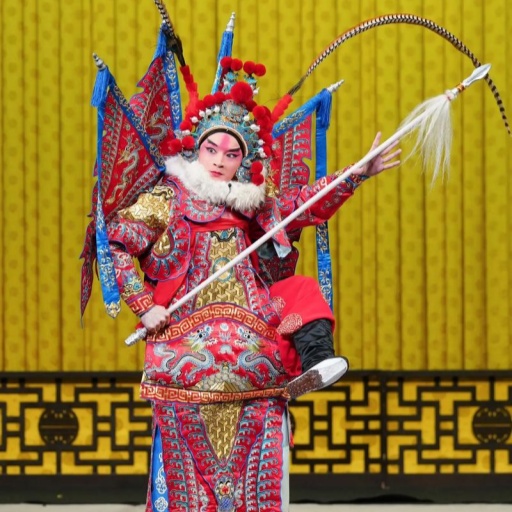
Peking Opera
Attend a Traditional Peking Opera
Experiencing Peking Opera is a must for those exploring Beijing’s rich culture. This traditional art form combines singing, acting, acrobatics, and colorful costumes. The performances are full of symbolic gestures and vivid makeup that tell famous Chinese stories.
You can catch shows at Liyuan Theatre near Qianmen or the Beijing Opera Theater on Dashilan Street. Shows often last 2-3 hours and may include surtitles in English. The melodies use traditional instruments like the jinghu (a two-stringed fiddle) and percussion.
Watching Peking Opera helps you understand Beijing’s artistic roots. It’s a window into China’s history, folklore, and values. Plus, the mix of drama, music, and dance makes it a captivating experience.If you want to dive into authentic Beijing culture, booking a Peking Opera show at these venues is a top thing to do.
Participate in a Calligraphy Workshop
Calligraphy is an ancient Chinese art that goes beyond writing—it’s about expression and mindfulness. Joining a calligraphy workshop lets you try your hand at brush strokes, ink control, and character formation.Many cultural centers in Beijing offer these classes, including the Confucius Temple (Kong Miao) in the Imperial City area and some studios within the 798 Art District. Teachers guide you through basic techniques and explain the meaning behind characters.
The experience is calming and rewarding. It connects you with thousands of years of Chinese tradition and philosophy. Plus, you get a souvenir—your own handwritten calligraphy piece to take home.For anyone wanting a hands-on cultural experience, calligraphy workshops in these locations offer insight and creativity all in one.
Explore a Traditional Tea Ceremony
Tea plays a huge role in Chinese culture, and attending a traditional tea ceremony shows you why. The ceremony focuses on brewing techniques, tea types, and the ritual of serving.Places like the Laoshe Teahouse near Qianmen or the Beijing Museum of Traditional Chinese Medicine regularly host tea ceremonies where hosts prepare and serve tea with precision and respect. You’ll learn about different teas—green, black, oolong—and their health benefits.
The ceremony encourages mindfulness, calm, and appreciation of nature’s gifts. It’s a peaceful break from the city buzz and a chance to connect with Chinese customs deeply.Trying a tea ceremony at these venues is a beautiful cultural activity for anyone visiting Beijing.
Frequently Asked Questions (FAQs)
Q: What are the top must-see attractions in Beijing?
Beijing is packed with world-famous sights. The Forbidden City is a must-see. It’s a vast imperial palace with rich history. The Great Wall, especially sections like Mutianyu or Badaling, is unforgettable. Tiananmen Square, one of the largest city squares globally, offers a glimpse of modern Chinese history. The Temple of Heaven is beautiful and peaceful, great for a morning visit. Don’t miss the Summer Palace with its stunning gardens and lake. If you want local vibes, explore the Hutongs — traditional alleys with cafes and shops. These spots give you a full taste of Beijing’s culture, history, and architecture.
Q: How can I visit the Great Wall from Beijing?
Visiting the Great Wall from Beijing is easy. Most tourists choose Mutianyu or Badaling sections. You can take a private tour, join a group tour, or use public transport. By public bus, from Dongzhimen bus station, you can catch a direct bus to Mutianyu. It takes about 1.5 to 2 hours. Private drivers offer more flexibility and comfort but cost more. Some travelers prefer guided tours that include transportation, tickets, and a guide. No matter which way you go, start early to avoid crowds. Bring water, good shoes, and dress in layers since the weather can change quickly.
Q: What is the best time of year to visit Beijing?
The best time to visit Beijing is in spring (April to June) and autumn (September to October). These seasons offer mild temperatures and less pollution. The city looks beautiful in spring with blooming flowers and fresh greenery. Autumn is perfect for clear skies and comfortable weather. Summer (July and August) can be hot, humid, and crowded with tourists. Winter is cold, sometimes snowy, but fewer visitors make it peaceful. Avoid major Chinese holidays like National Day in early October since many locals travel then. Planning your trip in spring or autumn helps you enjoy Beijing’s sights comfortably.
Q: How do I use public transportation like the subway in China?
China’s subway systems are modern and easy to use. Big cities like Beijing, Shanghai, and Guangzhou have extensive networks. First, get a transit card or buy single-ride tickets at machines or counters. Subway maps are usually available in English. Look for station names and line numbers. Signs and announcements often have English too. Before you enter, scan your ticket or card at the gate. During rush hour, subways can be crowded, so be prepared. Use apps like Metro China or city-specific apps to plan routes. Subways are cheap, fast, and convenient for sightseeing and daily travel.
Q: Can I use my credit cards or should I carry cash?
In China, cash is still common, but mobile payments dominate daily life. Credit cards like Visa and Mastercard work in major hotels, big stores, and airports. However, many smaller shops, restaurants, and street vendors prefer mobile apps like WeChat Pay or Alipay. These apps require a Chinese bank account or a linked card, which tourists usually can’t get easily. It’s best to carry some cash (Chinese yuan) for small purchases or places that don’t accept cards. ATMs are widely available, but some foreign cards may not work. Prepare some cash and check card acceptance in advance.
Q: Do I need a visa to travel to Beijing?
Yes, most foreign visitors need a visa to enter China. You must apply before your trip at a Chinese embassy or consulate. The most common type is the tourist visa (L visa). You’ll need a valid passport, completed application form, photo, and sometimes proof of travel plans. Some countries have visa-free transit or special regional policies, but these are limited. Processing usually takes a few days to a couple of weeks, so plan ahead. Always check the latest requirements before traveling, as rules can change. Having the right visa is essential to avoid problems at the border.
Q: Are there any cultural festivals in Beijing worth experiencing?
Beijing hosts many vibrant festivals. Chinese New Year is the biggest and most colorful. The city fills with fireworks, temple fairs, and family gatherings. The Lantern Festival, 15 days after New Year, lights up parks with beautiful lantern displays. The Mid-Autumn Festival celebrates the full moon with mooncakes and family reunions. The Dragon Boat Festival features boat races and traditional food. In autumn, the Beijing International Film Festival draws global stars. Experiencing these festivals offers a deep dive into Chinese culture, traditions, and local life. Check dates before your visit to join the celebrations.

